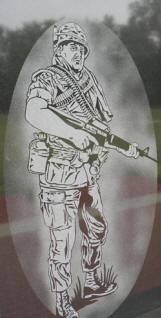 VIETNAM
WAR
VIETNAM
WAR
1964 - 1973
Cause: In 1945 and 1946, France sought to reestablish Vietnam as a French colony, as it had been before World War II. During World War II, Japanese troops had driven the French from Vietnam and made Vietnam a colony of Japan. With Japanís defeat in August 1945, the French hoped to regain control of Vietnam. Under Ho Chi Minh, a strong supporter of communism, many Vietnamese people rebelled against the French during the late 1940s and the early 1950s, hoping to drive the French from Vietnam. This rebellion marked the beginning of the Vietnam War. These revolutionaries proved to be successful, forcing the French to sign the Geneva Accords in 1954, in which the French agreed to leave Vietnam.
The Geneva Accords, however, set the stage for a continuation of the Vietnam War. Under this treaty, Vietnam was divided into two separate countries, North Vietnam and South Vietnam. These two nations were only to exist until 1956, when an election was to take place that would reunite the two countries as one under a single leader. Realizing that he would probably lose the election, the leader of South Vietnam, Ngo Dinh Diem, prohibited the election from taking place. Eventually, opponents to Diem in South Vietnam and their North Vietnamese supporters rose up, hoping to overthrow Diem. Hoping to prevent communism from spreading to South Vietnam, President Dwight D. Eisenhower sent American troops to South Vietnam to advise the South Vietnamese military in its war against the South Vietnamese revolutionaries and their North Vietnamese supporters. President John F. Kennedy continued sending advisors to South Vietnam during his administration.
Once Lyndon Baines Johnson assumed the presidency, he sought to a way to escalate American involvement in Vietnam. Because of President Johnson, The United States Congress issues the Gulf Of Tonkin Resolution.
This proclamation authorized Johnson to retaliate for the purported attacks in the Gulf Of Tonkin. The resolution allowed the president to take all necessary steps, including the use of armed force, to assist any member or protocol state of the Southeast Asia Collective Defense Treaty requesting assistance in defense of its freedom. The United States never officially declared war on North or South Vietnam, but it is difficult to claim that Vietnam was not a war. Fierce fighting took place, resulting in the deaths of approximately 58,252 Americans. Casualties suffered by the North Vietnamese and the South Vietnamese are heavily debated, but some estimates claim more than three million Vietnamese people combined, died. To try and win the war, The United States engaged in massive bombing campaigns of both North and South Vietnam most notably Operation Rolling Thunder and even of the neighboring countries of Cambodia and Laos, which the North Vietnamese used to transport troops and supplies into South Vietnam. Following the Tet Offensive in 1968, where North Vietnamese troops and their South Vietnamese allies nearly captured Saigon.
Richard Nixon won the election on a pledge to end The United Statesí involvement in the Vietnam War. By the end of his first term in office, Nixon had reduced American troops in Vietnam from 500,000 to fewer than 100,000. In 1973, The United States agreed to the Paris Peace Accords with North Vietnam, which essentially ended U.S. involvement in the Vietnam War.
| Ohioans Served: |
3,100,000 |
| Ohioans Killed: |
3,095 |